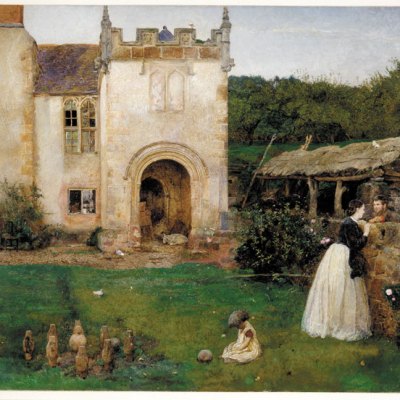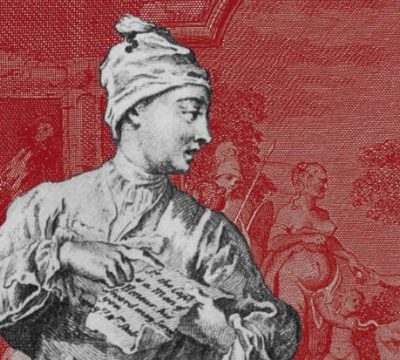In Lugano, at the end of February, the sun glints off the lake but the wind still has a bite to it. The lake, around the shores of which the city wraps itself, is deep and clear. The streets of Lugano are elegant, designed for walking and lined with high-end shops, with arcades protecting strollers from the winter rain and summer sun. Wordsworth came here in 1820, describing how ‘Cliffs, fountains, rivers, seasons, times / […] remind the soul of heaven’, and it’s true that the area is possessed of an overwhelming natural beauty.
Until recently Lugano was Switzerland’s third financial centre, but the 2008 crash has undone that. Now the city is attempting to rebrand itself as a cultural destination. A new arts centre, Lugano Arte e Cultura, opened in 2015. The LAC, a beautiful oblong building clad in green marble, overlooks the lake and from inside frames a view of the mountains. It contains a gallery, a thousand-seat concert hall with a resident orchestra, and faces on to a piazza where, most weekends, public events are held.
For all its sublimity, Lugano’s most enduring artistic legacy is not that of Romanticism but of modernism, a connection suggested by the clean, monolithic ambition of LAC, designed by local architect Ivano Gianola. In 1919 the writer Herman Hesse moved to the hills above Lugano and lived there for 40 years. Mario Botta opened his first architectural practice in the city in 1970. In The Third Man, Harry Lime says that Switzerland’s ‘500 years of democracy and peace’ had produced only the cuckoo clock. Another reading is that, in the 20th century especially, the country’s well-regulated ordinariness allowed an avant-garde to flourish – with Dada and James Joyce in Zurich, with the Geneva-based painter John Armleder, and, in Lugano, in the work of Méret Oppenheim (1913–85).
Porträt mit Tätowierung (Portrait with tattoo) (1980), Méret Oppenheim. Private collection

Oppenheim was born in Berlin, but spent much of her childhood at the family’s holiday home in Carona, a tiny hamlet nestling in the hills above Lugano, so it is appropriate that there is currently an exhibition of her work – the largest for many years – at the Museo d’arte della Svizzera italiana at the LAC (until 28 May). Oppenheim grew up near Basel, and moved to Paris in 1932, when she was 18. She quickly found herself at the centre of an artistic milieu that included Man Ray, Marcel Duchamp, Max Ernst, Alberto Giacometti and Hans Arp. Young, beautiful and talented, she threw herself into the Parisian scene, and its men fell in love with her. In 1933 Oppenheim began an affair with Ernst; she would later have a relationship with Marcel Duchamp. ‘It is not that I have any particular teacher,’ she wrote to her mother of this period, ‘but I have many, and there are many things that I see and hear through them.’ Her relationship with the men of Surrealism has often overshadowed her work, but she was more than capable of seeing and hearing on her own terms.
The misrepresentation of Oppenheim, as muse rather than artist in her own right, owes something to a series of photographs Man Ray took of her in 1933, which were published in the journal Minotaure as Erotique Voilée. These photos told a scandalous story – an old man wearing a fake beard (played by the cubist painter Louis Marcoussis) seduces a naked Oppenheim while they stand by a printing press, smeared with ink. Oppenheim, who was very much a collaborator with Man Ray in the production of the images, was unmoved by the sexual scandal they generated: ‘the idea of posing nude left me totally indifferent’, she later wrote.
With war looming in Europe, in 1937 Oppenheim left Paris and moved to Basel. Her family had already moved back to Casa Constanza, the large ramshackle house in Carona that her maternal grandfather had bought in 1917. It was a period of intense doubt for Oppenheim. Disconnected from the world of the arts, she recalled feeling ‘as if millennia of discrimination against women were resting on my shoulders, a deep rooted feeling of inferiority’. But Carona gave her respite: ‘In Carona, it was always august!’ she said.
Oppenheim was not a painter of place. She was an outsider, and interested in the outsides of things: in surfaces and textures. Her most successful drawings and paintings are small in scale and eschew the figurative. Instead they look like engineer’s sketches, or designs for strange imaginary machines. The symbolism of Jungian psychoanalysis – snakes, dismembered parts of the body, staffs – suffuses her paintings. But it’s when she was forced to confront the materiality of real world objects that she was at her best.
Her objects – she referred to them as ‘things’ rather than sculptures – are still deeply unsettling, drawing you into their worlds and their logic. Kasten mit Tierchen (Box with Little Animals; 1963) is an old cigar box, the interior of which has been painted white, with bow-tie pasta glued to the sides so that it looks like little creatures are scrambling around inside. Bon Appetit, Marcel (The White Queen; 1966) consists of a small totemic figure, made of dough, in which nestles the spine of a partridge. Oppenheim’s most famous ‘thing’ is her Object (also known as Fur Cup) of 1936, a tea cup, saucer and spoon covered in the fur of a Chinese antelope, which possesses the unsettling uncannyness that her work can still trigger.
Handschuhe (Paar) (Gloves [Couple]) (1985), Méret Oppenheim. Private collection
![Handschuhe (Paar) (Gloves [Couple]) (1985), Méret Oppenheim. Private collection](https://apollo-magazine.com/wp-content/uploads/2017/03/07.-M.-Oppenheim_Handschuhe-Paar_1985.jpg?resize=726%2C730)
For the German philosopher Walter Benjamin, the archetypal figure of modernity was the window-shopper, a new kind of flâneur who haunted Europe’s capitals, consuming with his gaze. Oppenheim’s best work seems to invoke a similar relationship between viewer and object. For a time she collaborated with the fashion designer Elsa Schiaparelli, and many of her ‘things’ would not be out of place in the windows of a Lugano boutique. Das Paar (The Couple, 1956) – a pair of boots joined at the toe – is an invitation to walk but also a suggestion that to be coupled is to be hobbled. The delicate Handschuhe (Paar) (Gloves [Couple], 1985; Fig. 1), a pair of blue suede gloves with blood vessels printed on them, invite the touch. You want to feel them on your skin. You want to own them.
Before leaving, I take a bus from Lugano up into the hills to Carona. There are few people about as I walk through the hamlet. Outside Casa Costanza is the fountain – two snakes winding round a staff – which the artist Daniel Spoerri has erected in Oppenheim’s honour, based on her Hermesbrunnon (Fountain of Hermes; 1966–74). Up the hill, in a walled graveyard, I find Oppenheim’s grave: a red sandstone headstone engraved with her name and dates, and the image of a snake, eating its own tail.
From the April 2017 issue of Apollo: preview and subscribe here.


